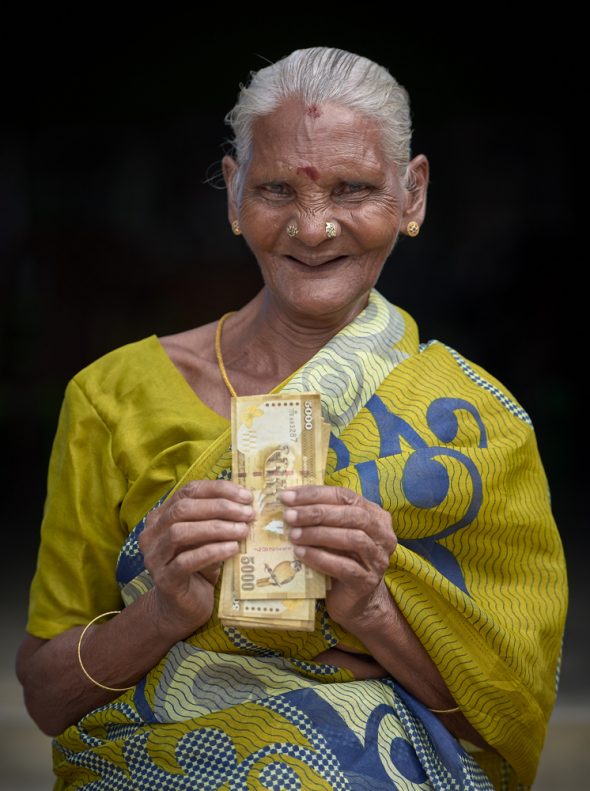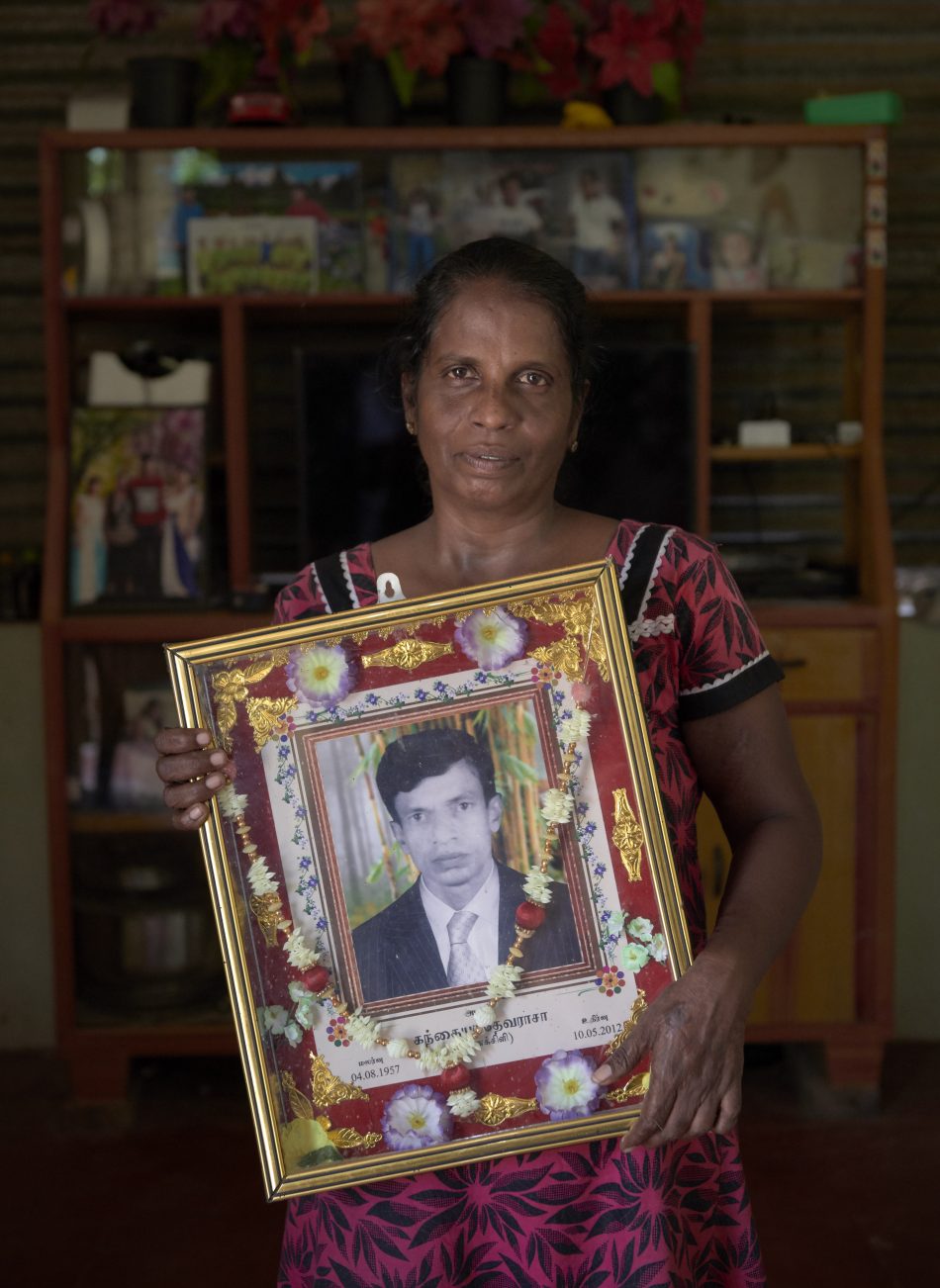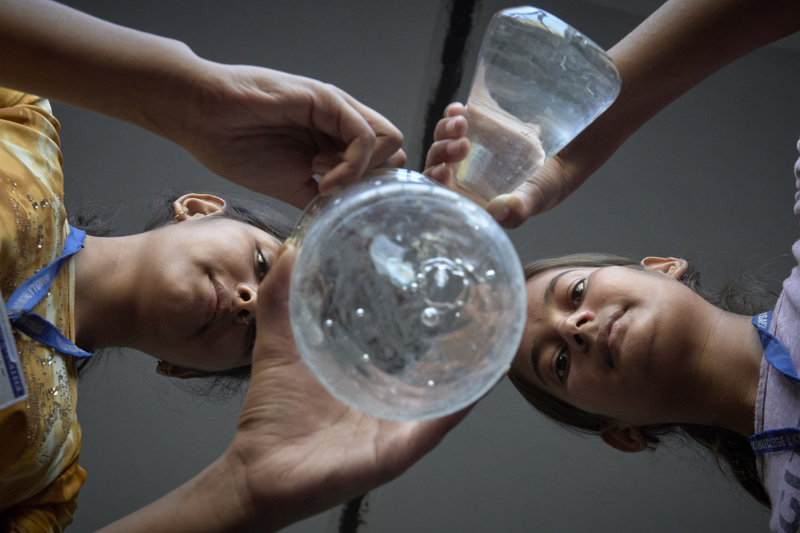Global Lens Reflections on life, the universe, and everything
Looking back at 2018
We like to look back. When I photograph someone walking past me, I try to stay focused on them as they walk away. After a moment or two, most often they will turn and look back. Like this woman in a refugee camp in Maban, South Sudan, who I photographed in May. That look back is worth waiting for.
As 2018 comes to an end, let’s take a look back at some of where I’ve been this year, using images to trace my wanderings.
At the beginning of the year, I spent some time in the Philippines, documenting the work of people like Maria Jessica Cicillo.
She’s a deaconess who works with children for a church in Mt. Heights. I visited her while documenting the work of graduates of Harris Memorial College, which is supported by United Methodist Women. It does an excellent job of turning out women who are committed to working for change in their communities. Women like Lodema Dela Cruz Doroteo, the first native teacher in her indigenous village of Santa Ines.
I also documented some of the work of the Kapatiran-Kaunlaran Foundation (thankfully also known simply as KKFI). It’s also supported by UMW. At a KKFI preschool in Pulilan, a village in Bulacan, a girl shows off her class work–the letter N covered with glued-on cotton balls.
And here’s Larren Jo “LJ” Bacilio, a teacher in KKFI’s Alternative Learning System in the Tondo neighborhood of Manila, one of the sprawling city’s poorest neighborhoods. It’s a program for dropouts and other kids who just didn’t fit in the regular school system.
United Methodist Women also supports the Mary Johnston Hospital in Manila, so I spent some time there, where nurse Jazmine Gino-Gino checks the flow on an IV she just inserted in the hand of ten-month old Johan in the emergency room. Holding the boy down is nurse Brian Grape Maningding, while his mother, Mirakel Guarin, provides comfort.
The hospital also has a nursing school, and the students spend several hours each week providing health education and wellness care in a poor neighborhood. Here’s nursing student Ella Manio helping Nelda Balaza care for her 1-year old son Ibo during a home visit. Five-year old Akim looks on.
Another nursing student, Nirish Camporedondo, here helps 5-year old Jean Jamilla Tulauan (center) and her 4-year old sister Jewell Rae hear their heartbeats during a visit to the girls’ home.
The nursing school’s outreach program also includes a feeding program for neighborhood children. As the kids eat, the students talk with them and their parents about basic health care issues. Here’s 8-year old Lance Macapanas (right) teasing his 6-year old friend Luigi as they enjoy a meal.
During 2018 I photographed several demonstrations back in the U.S. I was in San Francisco in March, for example, when tens of thousands of people filled the streets to demand sensible gun safety regulations in the March For Our Lives, including this woman, whose sign presages what came to pass eight months later when gun safety advocates fared well in national midterm elections.
There were also demonstrations against the Trump administration’s racist and xenophobic immigration policies, such as this one outside a federal detention center in Sheridan, Oregon.
Among those leading the demonstration was an old friend from when I lived in Honduras. Jorge Rodriguez is now a United Methodist pastor outside Portland.
Similar protests took place outside the federal detention center in Seatac, just south of Seattle. Here’s a photo of my friend Mary Kohlstaedt Huycke, a United Methodist district superintendent, praying so hard she seems to be bending the fence around the prison.
And here’s Mona Rentz of Beaverton, Oregon, waving at passing cars as she holds a sign outside the field office of the United States Immigration and Customs Enforcement (ICE) in Portland. The office was blockaded by protestors for several days, successfully closing the office for a while until the feds moved in to tear down the barricades and arrest a bunch of people.
I also photographed the International AIDS Conference in Amsterdam, a massive gathering that attracts almost 20,000 people from around the globe. Sandwiched between countless academic presentations about arcane aspects of the virus were scores of protests. One of my favorite was a group of Taiwanese sex workers who dressed as police officers and patrolled the Global Village area of the conference asking people if they had a condom. If they did, they placed them temporarily “under arrest.” (If they didn’t have a condom the women gave them one from a big bag marked “evidence.”) The women said Taiwan’s police will use such a thin pretext as possession of a condom to charge women with a crime. It’s typical, they say, of the criminalization of sex work around the world, something that’s complicating the struggle against HIV and AIDS.
Early in the year I spent a week in Hong Kong to report on the situation of some 370,000 foreign domestic worker, almost all women. Mostly from the Philippines and Indonesia, the workers make up five percent of Hong Kong’s population yet often face harrowing working conditions and outright violations of their basic rights as human beings. Here’s a worker from the Philippines praying by an outdoor altar at St Joseph’s Catholic Church in Hong Kong.
Workers aren’t just praying, however. They’re fighting back against abuse and injustice. I wrote about their struggles for an article soon to be published in response, the magazine of United Methodist Women, which has long supported a couple of key Hong Kong organizations that support the women with advocacy and emergency shelter. While the stories of mistreatment are heart-rending (I had a box of tissues beside me whenever I interviewed women in a shelter), there’s also a feisty spirit that inspires the workers’ efforts to organize to defend their rights, something that takes many forms, including dance. Here are Filipina domestic workers dancing on Chater Road, where tens of thousands of them gather every Sunday, their only day off. Much of the dancing is in support of One Billion Rising, a global campaign against violence against women.
I should note that in almost all of my work, I can only tell the story if I can get to the story, and that usually means someone on the ground who helps me understand what’s happening, and who introduces me to whoever I need to meet. On this trip that role was filled aptly by Sushi Au, a United Methodist Global Mission Fellow in Hong Kong. Here she is in her role as a teacher at Bethune House, a shelter for workers who have been abused by their employers.
For the record, Sushi has since moved to San Francisco where she works at the Waller Center, following Maggie Lohmeyer, a global mission fellow who I also visited this year in order to shoot some video footage. It’s one of two short videos about GMFs where I provided the raw material. Here’s the one about Maggie. And here’s another one about Micah Pascual, a Filipina serving in Uruguay.
Once again I spent several weeks this year in troubled South Sudan, documenting a bit of what the church is doing in that war-torn country. About one-third of the country’s population is displaced, including Rene Abdallah (left) and Anjima Fahal who here struggle to keep water out of their shelter during a heavy rainstorm in a displaced persons camp at the Holy Family Catholic Church in Wau. The church has provided food, shelter material, and health care, and the presence of clergy and religious has fostered a sense of relative safety for the families who first occupied these church grounds when fighting enveloped the city in 2016.
The violence has spread into corners of the country not affected by earlier fighting, such as the Equatoria region, where 2-year old Abrahim Lino carries mangoes in a camp for the displaced that has formed around the Our Lady of Assumption Catholic Church in Riimenze. The boy’s father, who worked on a church-run farm, was detained, beaten and burned to death by soldiers in late 2016.
At a church-run school outside Rumbek, kids from the neighborhood left hungry by a pernicious double whammy of conflict and climate change benefit from a feeding program.
It would be inaccurate to suggest that hunger and suffering are the only images that represent South Sudan today. It’s also important to show how ordinary people work hard to keep it all together, to maintain some semblance of normalcy in an often abnormal world. For example, here are girls coming to that same school, getting a last minute uniform adjustment from their mother. I like this photo precisely because of how universally ordinary it is.
Despite it’s own woes, South Sudan ironically hosts refugees from other countries, such as these two girls in a school in Maban, where more than 130,000 refugees from armed conflict in the Blue Nile region of neighboring Sudan have found a temporary home in four camps.
During my visit to the refugee camps at Maban, I was hosted by Jesuit Refugee Service, which carries out a variety of work there. Some video that I shot of their work was edited into a promotional video by an Irish agency that funds their work in Maban.
I also spent ten days on that trip visiting the Nuba Mountains of Sudan. It wasn’t easy to get there. After two years of negotiations, I flew on a United Nations plane from Juba, the capital of South Sudan, to the refugee camp at Yida, a horrifically hot and dusty settlement on the border between South Sudan and Sudan. From there it’s a buttocks-numbing eight-hour ride through the bush along a corridor that rebels patrol to prevent attacks by the Sudanese military. In lieu of a visa, I had a travel permit from the Sudan People’s Liberation Army-North. Although technically I was inside Sudan, I had no permission from the central government in Khartoum, which has refused to issue me another visa since I last covered their war in Darfur in 2007.
It’s difficult to find a more isolated region than the Nuba Montains, where culturally African people essentially live under siege by the culturally Arab government in Khartoum. Although the bombings that characterized life in the Nuba for years have temporarily halted, this scene I found in the Mother of Mercy Hospital in Gidel, the only major hospital in the region, hints at the legacy of those bombings.
The Nuba have long suffered from political neglect by the international community. United Nations agencies, ultimately responsible to national governments, stay away, fearing the wrath of Omar al-Bashir, the indicted war criminal who heads the Islamist government in Khartoum. Most aid groups won’t enter, at least not publicly, afraid that if they upset Khartoum they’ll get kicked out of Darfur, where their presence keeps people alive who’ve been displaced for well over a decade. So the Nuba are on their own.
Except for the church. During the last three decades of war, the church has maintained its presence in the Nuba Mountains, providing pastoral accompaniment, education, and health care, encouraging hope while the rest of the world looked away. I wrote seven articles about the church’s role amid the many challenges faced by the Nuba. You can find links to them in a blog post that I wrote about the visit.
Here’s a girl in a church-run school in Lugi, celebrating the letter G.
And here’s nurse Isaac Langurry with a young girl wrestling with partial blindness in the pediatric ward of the Mother of Mercy Hospital, which, not surprisingly given its name, is also church-sponsored. Isaac is a graduate of the Catholic Health Training Institute in Wau, South Sudan, which is run by Solidarity with South Sudan.
Getting toward the end of the year, I traveled to Sri Lanka, where I met people like Annaletchumi Velayutham and her husband Velayutham Sinnaih. They were displaced during Sri Lanka’s bloody civil war, and when they moved back home to their village of Karadianaru after the war, a church group loaned them two goats. Three years later, they have over 30, and they’ve sold several goats to finance the expansion of their simple house and buy better seeds for their farm fields. They’ve also paid the loan off. Here they are now with two of their youngins.

And here’s Thillaiaml Nallaperumal, another war survivor, grinning after getting a microcredit loan from a church group for the equivalent of $500. She’s going to use it to grow peanuts this coming season.

I’m still editing material from the trip, part of which focused on work with war widows supported by United Methodist Women.

From Sri Lanka I went to India, where I worked on several projects, including some documentation at Isabela Thoburn College in Lucknow, where I captured these two students in a chemistry class.

Late in November I traveled to Rome for a couple of days, where I shared a visual presentation for the tenth anniversary of Solidarity with South Sudan, an international network of Catholic groups providing training of teachers, health workers and pastoral agents in the African nation.
From there I went to Iraq for a few days. Turns out I didn’t have the right visa to go where I needed to go (that’s a long story), but I found a very capable fixer who schmoozed her way through government and militia checkpoints in order to get me places, notwithstanding one unpleasant experience when we were detained for a while at a checkpoint run by a particularly recalcitrant faction of the Shia militias that control much of the area around Mosul.
I was last in Mosul at the beginning of 2017, when the Iraqi military captured the eastern part of the city from ISIS. (See my annual review from a year ago.) Since then, months of ground combat and airstrikes succeeded in driving ISIS from the west of the city, but at a terrible cost.
Here’s Qasim Yahia Ali walking along a rainy street in the old city of Mosul on the way to the ruins of his house, where he showed me the leg of an ISIS fighter whose body is still trapped in the rubble. Qasim was quite a character. During control of Mosul by the Islamic State, he earned money as a bootlegger–a vocation heavily punished by the jihadis. In the wake of the war, the 75-year old man has moved back into the ruins of the old city.
Thousands of people have not moved back to Mosul and remain living in diplaced camps or with relatives, simply because they have nothing to move back to. But those who have returned are working hard at reestablishing normalcy, as reflected by these girls on their way to school.
For many of the Yazidis who suffered the worst of the ISIS campaign, there’s no going home. Although ISIS was militarily defeated in 2017, Yazidis who escaped the attempt at genocide in Sinjar say it’s still not safe to return home. Nor do they have sufficient resources to rebuild their homes. So they linger in displacement camps. Here are girls in a school inside a camp for 600 displaced Yazidi families at Dawodiya in Iraq’s Kurdistan region.
In Dawodiya, as everywhere I encounter the suffering poor, I was welcomed with smiles and open arms. If I asked to interview someone, they would often accept only if I first agreed to come in for tea. Here’s Gole Yaqoub making tea for me while her mother-in-law, Adlane Saido, holds Yaqoub’s 9-months old child Zylan in their small shelter. The poor turn genuine hospitality into a gift I receive with awe and gratitude.
As we end the year celebrating the Christmas season, I’m reminded once again of how Jesus was born into just such a setting. As Thomas Merton wrote in Raids on the Unspeakable, “Into this world, this demented inn, in which there is absolutely no room for him at all, Christ has come uninvited. But because he cannot be at home in it, because he is out of place in it, and yet he must be in it, his place is with those others who do not belong, who are rejected by power, because they are regarded as weak, those who are discredited, who are denied the status of persons, tortured, exterminated. With those for whom there is no room, Christ is present in this world.”
Those words take flesh today in so many places around the world, including among the Yazidi families living in the Dawodiya camp, where Selvana Mahmad holds her son Ajan Amjad, born this November. May this coming year be a time for us to practice better hospitality, opening our homes and lives to those born and living in exile and at the margins of our community, those for whom there is no room.
































6 Responses to Looking back at 2018